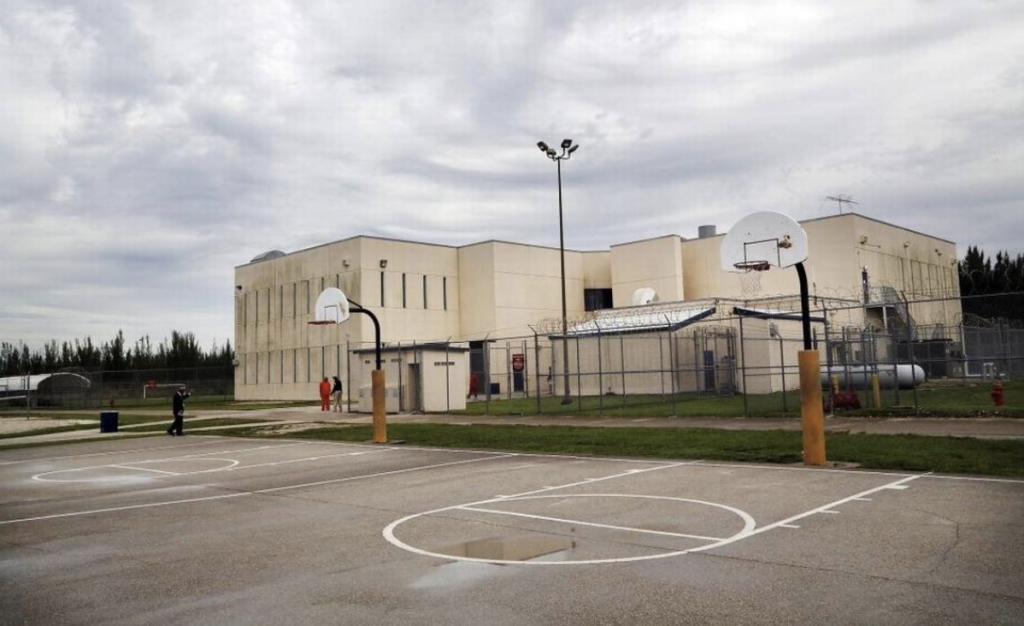The political climate for the past ten years has been anything but calm, and central to political struggles in D.C. and elsewhere has been the ethical issues surrounding immigrant detention. But for Brianna Nofil (T ‘12), there has never been a better time to research the questions that intrigue her the most.

A native of South Florida, Nofil has felt the undercurrent of immigration tensions throughout her life as a resident of a region with a large population of immigrants. Central to this tension was Krome Detention Center — a looming, overpowering presence in her community. Krome, which was a missile testing facility for most of 20th century, has only recently been converted to an institution to house detained immigrants. Krome had always been there, but exactly what its existence meant in her hometown was not usually acknowledged, and as Nofil remarked, “There was a reason people living there had a hazy understanding of what was going on.”
While at Duke, Nofil, who double majored in history and public policy studies with a minor in education, let her experiences growing up lead her to a senior thesis on the history and privatization of U.S. immigration detention — which, according to Duke history professor Gunther Peck, was nothing less than “stunning.” In a round-table forum on October 1, Nofil delved deeper into her central academic interests — of which she has written about in publications such as Time and Atlas Obscura — as well as her current studies as a doctoral candidate at Columbia University.

Coming to Duke, Nofil used the resources and classes in the history department to answer two chief questions: what power structures were in place to confirm an institution like Krome’s significance in the community? And where exactly did this power come from?
These questions lead her to her current focus at Columbia, which is the history of immigrant detention centers in the 20th century. Her main argument? “U.S immigration has always really relied on jails.”
By the early 1900s, immigration was taking hold as a major historical event in the U.S and the federal government took its chances on what it saw as the perfect solution — let local communities handle immigration, and thus control what could (and eventually would become) a growing problem. This led to a network of contracts in the 20th century that paid sheriffs of small, lower-income towns all over America a nightly rate to “board” immigrants in jails.
One case study, as Nofil points out, centered around Chinese immigrants in the early 1900s who came to northern New York from Canada. They were held in local jails all throughout the county while their cases were processed, and communities see the booming immigrant detention business as net-positive for the community. Within mere months, these Chinese jails had created an arms race of sorts. Communities competed and clamored for more contracts from the federal government as they saw incomes in their town continue to grow.
It’s easy to see the moral dilemma of profiting off of detaining immigrants, but what is even more concerning is why the federal government pawned off a federal responsibility to communities, thus ensuring a lack of standardization in immigrant treatment across the country. So while there was relative support surrounding the business, unease soon began to emerge. As quota laws and anti-trafficking measures were created, Canadian and European immigrants also made their way over to the U.S, prompting foreign countries to finally notice — and ask — whether communities utilizing prisons as detention centers was ethically sound. Newspapers around this time started publishing op-eds and editorials, and soon a resistance against profiting off of jailing immigrants cropped up — something Nofil adds is “inspiring” to see, especially in the context of our own times.
The perpetual failure of jails has allowed immigration in the modern day to position big detention centers as a humane alternative. But what does that mean for immigration detention today? As Nofil posits, early forms of resistance are inspiring because it assures us that jailing immigrants was always questioned by communities, even at that time. Communities were capable of distinguishing right from wrong, even amidst the issue of immigration where the makeup and economy of their communities were at risk of changing. As the conversation concluded, one central theme seemed to stand out — that to understand the consequences of immigration detention centers, we must look to the past to see how detention started, and only by understanding the origins can we work toward a better solution.

